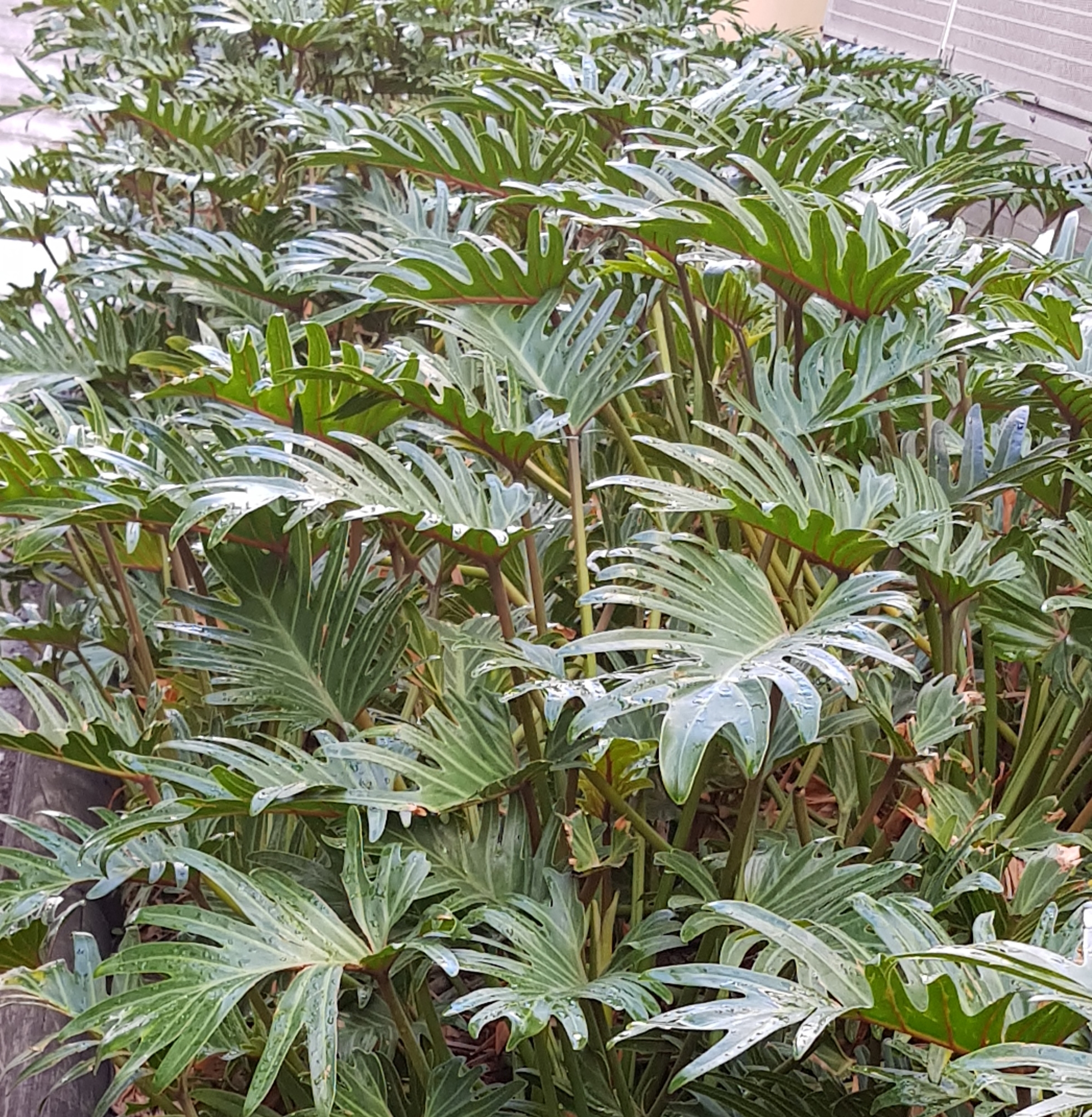
Greek phileo – love, dendron – tree, referring to the climbing habit.
Epiphytic vines climbing by aerial roots. Leaves variable, entire to deeply lobed and with parallel venation; stalks thick, rarely with a joint, the sheath not clasping the stem. Inflorescence resinous at flowering, shortly stalked. Flowers unisexual, perianth absent. Spathe mostly green or white but may be variously coloured and marked, persistent until fruit ripened. Spadix whitish with zones of male and female flowers separated by a sterile zone of flowers with sterile stamens. Female flowers without staminodes. Ovary mostly of 4-8 chambers with 1-many ovules. Fruit a white to orange or red berry.
Grown for the appealing bold foliage, mostly as indoor pot plants but popular in warm climate gardens.
Can be poisonous. As with Monstera, identification is complicated by differences between juvenile and adult leaves and the presence, in horticulture, of hybrids. Some available plants are cultivars of uncertain hybrid background. Complications with hybrids make a key to available species of doubtful value.
350-400 species from wet forests of tropical America.
Stem cuttings and layers (occasionally by seed).
Fruit of some species is eaten locally and there are also local medicinal applications, possibly antibiotic; used by natives as a fish poison.
Spadix without a terminal appendage; leaf sheath not clasping either the main stem or the sheath above cf. Monstera.
Mayo (1991), Croat (1997).
Source: (2005). Araceae. In: . Horticultural Flora of South-eastern Australia. Volume 5. Flowering plants. Monocotyledons. The identification of garden and cultivated plants. University of New South Wales Press.
